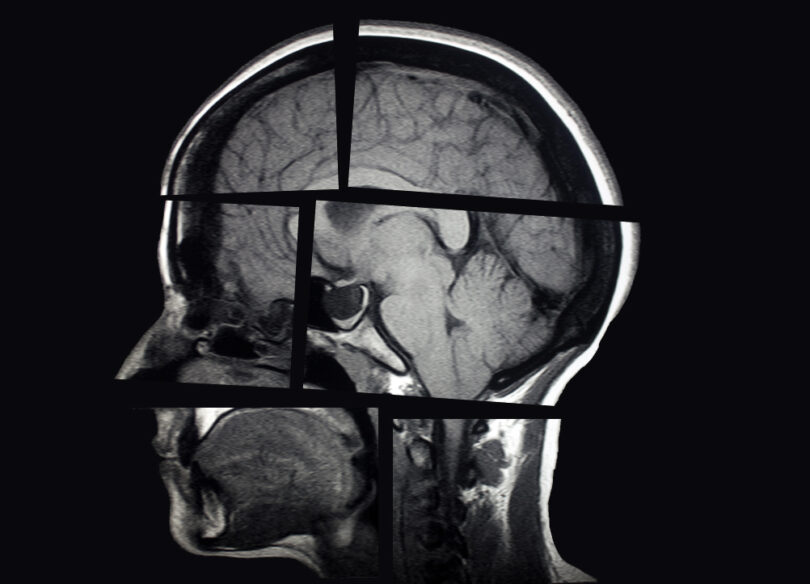In most respects, May 6, 2022, was a typical school day for Amy Paulk Grist.
Tift County High School buzzed with end-of-the-year activities. Tift County is the only high school serving Tifton, Georgia, a mostly rural community off I-75, just an hour north of the Florida border.
A veteran economics teacher of more than a decade, Amy was wrapping up another successful year at the high school of nearly 2,300 students when her vision started to blur.
Something wasn’t right.
She called her brother, Dr. Eric Paulk. After describing her symptoms, the director of the emergency department at Tift Regional Medical Center didn’t hesitate.
“Amy, you’re having a stroke,” he told her. “Get to the hospital.”
When Amy arrived, the team rushed her into the back. It turned out that she hadn’t had a stroke—she’d had three.
The doctors administered the gold standard of stroke care, a medication called tPA (short for Tissue Plasminogen Activator). The drug breaks up blood clots and restores blood flow to the brain.
But it didn’t work.
Pressure built up inside Amy’s head, becoming so intense that the doctors had to perform a craniotomy, removing a portion of her skull to give her brain some relief from the swelling.
The neurosurgeon said there wasn’t much hope. She would probably die.
A Complex Injury
Amy was only 36. Active and physically fit, she lived the picture-perfect definition of a healthy lifestyle. She even played tennis with her 10-year-old daughter the day before she was hospitalized.
About 800,000 Americans suffer a stroke each year, according to the Centers for Disease Control and Prevention.
We’re working on very complex problems, and complex problems require a diverse set of expertise to solve.” —Steven Stice, Georgia Research Alliance Eminent Scholar and D.W. Brooks Professor in the College of Agricultural and Environmental Sciences
Most stroke patients are older, but about one in seven strokes occur in people under 50, like Amy.
“Stroke is a really complicated injury,” says Steven Stice, a world-renowned expert in stem cell research, Georgia Research Alliance Eminent Scholar and D.W. Brooks Professor in the College of Agricultural and Environmental Sciences. “When someone has a stroke, the cells in the brain start to die, and those dying cells release damaging particles that initiate a chain reaction of inflammation in the brain.”
The only treatments available are the clot-busting medication Amy received or surgery. But doctors have less than six hours after the onset of a stroke to get patients on the operating table and even less time to administer tPA. And not every hospital has the medication or the medical expertise to perform surgery.
As a result, most stroke patients don’t receive either.
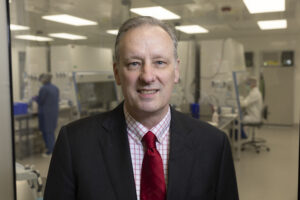
Steven Stice, a world-renowned expert in stem cell research, leads the University of Georgia’s Regenerative Bioscience Center. (Photo by Peter Frey/UGA)
So why are there so few effective treatments for such a common condition?
While many researchers have tried to come up with new therapies to treat or prevent strokes, they’ve all failed.
“You can make a lot of things happen in a petri dish, but that just does not always translate to people,” says Franklin West PhD ’08. A professor specializing in stem cell biology in the UGA Department of Animal and Dairy Science, West is a highly sought-after translational stroke and traumatic brain injury investigator.
The jump from the laboratory to human clinical trials is a big one, which is why that gap is often called the “Valley of Death.” Many researchers will try, and many will fail.
But that’s often where scientists glean their most valuable insights. Why could this drug kill a virus in a mouse but not a human, for example? How can we make therapeutics more translatable to the human clinical condition?
That goal of translating scientific findings into actual treatments and therapies got the two researchers thinking.
“We’re working on very complex problems,” says Stice, “and complex problems require a diverse set of expertise to solve.”
Stice and West teamed up with Dr. John Peroni, a professor focused on regenerative medicine in UGA’s College of Veterinary Medicine, to create the Regenerative Bioscience Center (RBC) at UGA.
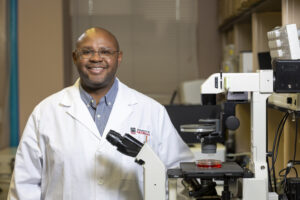
Franklin West co-founded the Regenerative Bioscience Center with Steven Stice and John Peroni in 2004. (Photo by Peter Frey/UGA)
What started in 2004 as a relatively small group of researchers has since grown to include more than 40 members spanning seven colleges, including the College of Engineering, the College of Public Health, and the College of Pharmacy.
Together, the scientists aim to tackle medical challenges and develop cures and treatments for devastating diseases like Parkinson’s, Alzheimer’s, and stroke.
What is Regenerative Bioscience?
You’re working in the garden, shoveling dirt to make room for a new plant. You look down and see what used to be a fully grown earthworm now bisected and missing its tail. But you don’t worry about it too much. You know the worm will regrow that missing part.
That’s regeneration.
Some worms, like the small aquatic flatworms Rachel Roberts-Galbraith studies, can even become two entirely separate, perfectly functional animals after being split in two. During this process, part of the flatworm, called a planarian, regenerates an entirely new brain.
If we can figure out how brain regeneration works in animals, we might find some answers for people as well.” —Rachel Roberts-Galbraith, Assistant Professor of Cellular Biology in the Franklin College of Arts and Sciences
One of the goals of the RBC is to figure out why people can’t do the same thing.
People can regrow a liver even when it’s been heavily damaged. But when human brains are injured, it’s much more of a guessing game whether the neurons and networks can heal—with or without medical treatment. Most of the time, they don’t.
“If we can figure out how brain regeneration works in animals, we might find some answers for people as well,” says Roberts-Galbraith, an assistant professor in UGA’s Franklin College of Arts and Sciences. “Regeneration is an area of biomedicine that holds immense promise.
“When we find out these essential truths of how regeneration works, our goal is to try to translate that to human therapies. The RBC is the perfect place for that because we have natural partners for the next steps in that translation process.”
A Different Kind of Stroke Treatment
With proper funding, one of the RBC’s biggest successes to date will soon enter clinical trials.
Developed by Aruna Bio, a biotechnology company co-founded by Stice, the drug AB126 is the first of its kind to be used in the nervous system. Produced from neural stem cells, the therapeutic is incredibly small, which enables it to be given to a patient by IV. The treatment then crosses from the blood into the brain, directly targeting those areas affected by the stroke.
The new therapy amplifies the body’s ability to heal itself by reducing the inflammation caused by a stroke. And it has the potential to help all stroke patients without limitations.
Another promising feature of AB126 is its ability to be used multiple times. Most cell therapies rile up immune systems, causing an inflammatory storm that can negatively affect the already damaged tissue.
But the new treatment doesn’t have that effect.
The ability to administer the treatment multiple times opens opportunities for long-term therapeutic uses—and not just in the hospital right after a stroke.
Stice and his colleagues are exploring the drug’s efficacy in treating amyotrophic lateral sclerosis, also known as ALS or Lou Gehrig’s disease. ALS is caused by aggressive inflammation in the nervous system, which leads to progressive muscle weakness. There is no cure for the condition, and it’s almost always fatal.
Animal studies show early promise in reducing inflammation caused by the condition.
The researchers are also exploring ways to administer the drug through a nasal spray, which could be a game changer for chronic inflammation-based diseases such as Alzheimer’s, Parkinson’s, and traumatic brain injury.
A Journey Toward Recovery
For Amy Paulk Grist, the new therapeutic is not just an exciting prospect. It’s a potential life-changer.
Despite doctors’ dire predictions, Amy survived her ordeal.
After 52 days in two different intensive care units and months spent on the rehab floor of Shepherd Center Hospital in Atlanta, Amy made what can only be described as a miraculous recovery.
“She’s the same Amy in a different body,” says her father, Gary Paulk.
Cognitively, Amy is all there. She can tell you her Netflix password, remembers the words to her favorite ’90s songs, and even corrected her dad when he couldn’t recall the name of the drug doctors gave her after first arriving at the hospital.
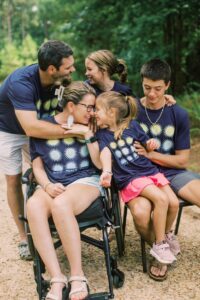
Amy Paulk Grist (front, left) draws strength from her close-knit family, including her children Marlee, Mason, and Miley, and husband, Derek. (Photo Special)
But her vocal cords and muscles are weakened, so she sometimes struggles to get the words out. When her family and friends can’t understand her, she starts using sign language, a skill she learned in the fourth grade.
She can’t swallow. She relies on a wheelchair to get around. And she’s on a feeding tube.
It’s frustrating to miss out on the things she used to enjoy, like going to UGA football games. The diehard Bulldog fan didn’t miss a game before her strokes.
When Stice and West invited Amy and her family to visit the RBC, they were all in.
They toured the facility and learned about AB126 and its potential to help patients like Amy by reducing inflammation in the brain and getting patients closer to their old selves and abilities.
“I’m just like, ‘What’s it going to take to make this thing happen?’” Gary Paulk says. “We want to help. I said, ‘Amy, you can be their poster child.’”
Although AB126 still has a long way to go to make it onto shelves, Amy’s family is encouraged by the progress the RBC is making in stroke care. In the meantime, Stice is working to connect them to other clinical trials in regenerative medicine that can provide some relief for Amy’s symptoms.
“It felt like they were saying, ‘Hang on, Amy. It’s coming,’” Gary Paulk says. “We’re just waiting for the day they call and say, ‘Bring her to Athens. It’s time.’”
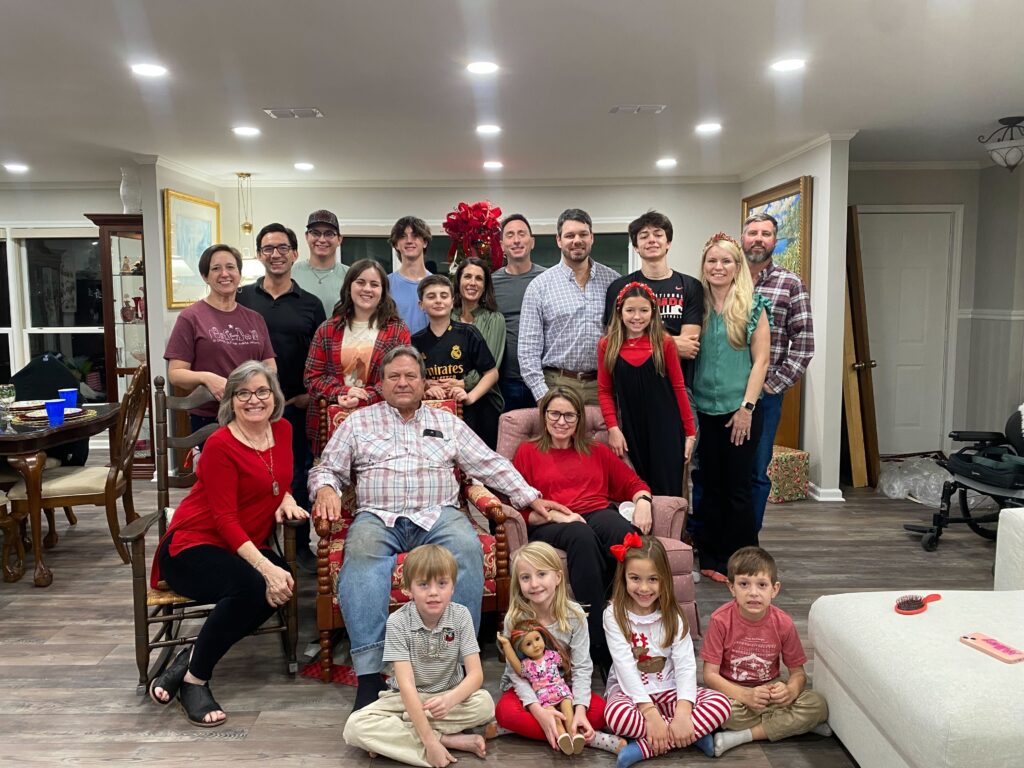
Amy Paulk Grist (shown seated in the pink chair) suffered multiple strokes but is recovering with the help of her family and loved ones. (Photo Special)
The Next Generation
Celebrating its 20th anniversary this year, the RBC recently added a doctoral program in regenerative bioscience to its docket. Jointly administered with UGA’s College of Agricultural and Environmental Sciences, the degree is the first of its kind offered by any institution in the state of Georgia.
Along with the undergraduate major established in 2022, the new degree demonstrates the university’s commitment to advancing research and education in regenerative medicine and improving health for both animals and humans.


